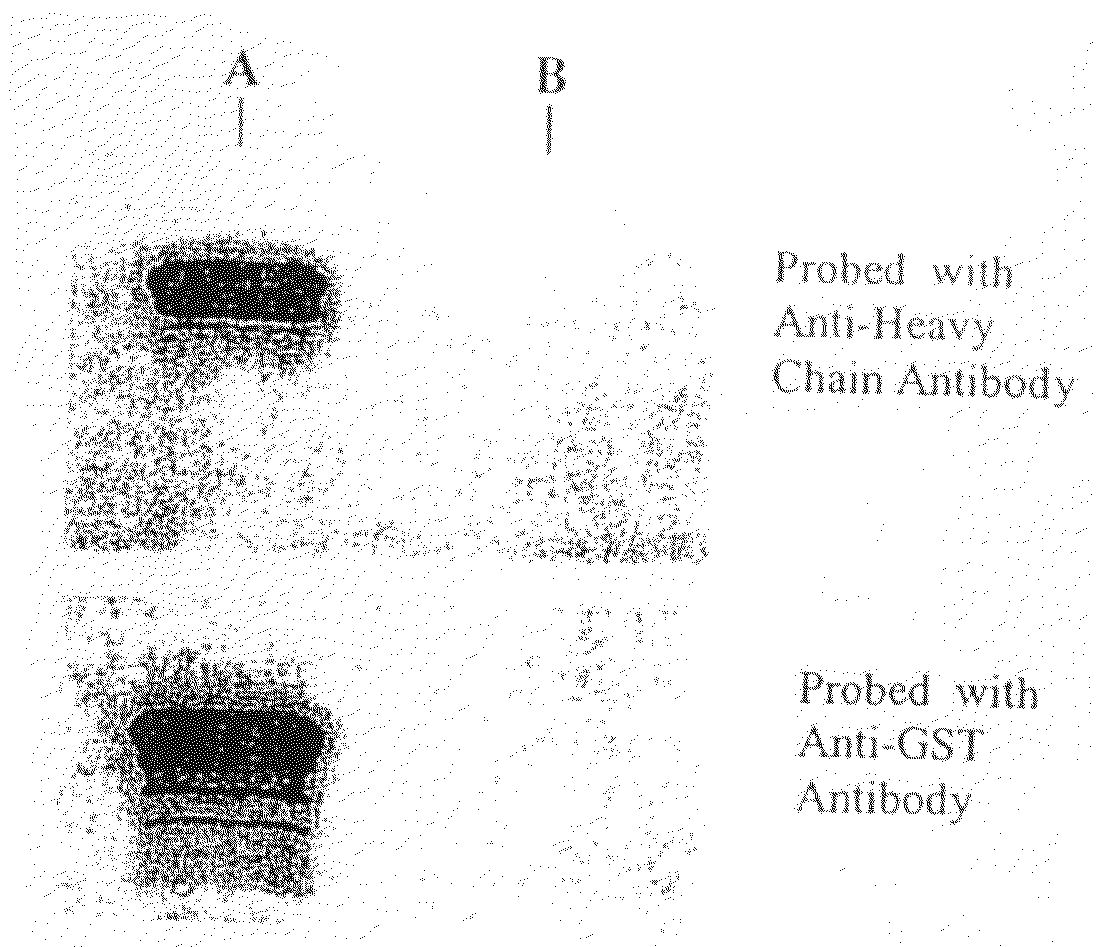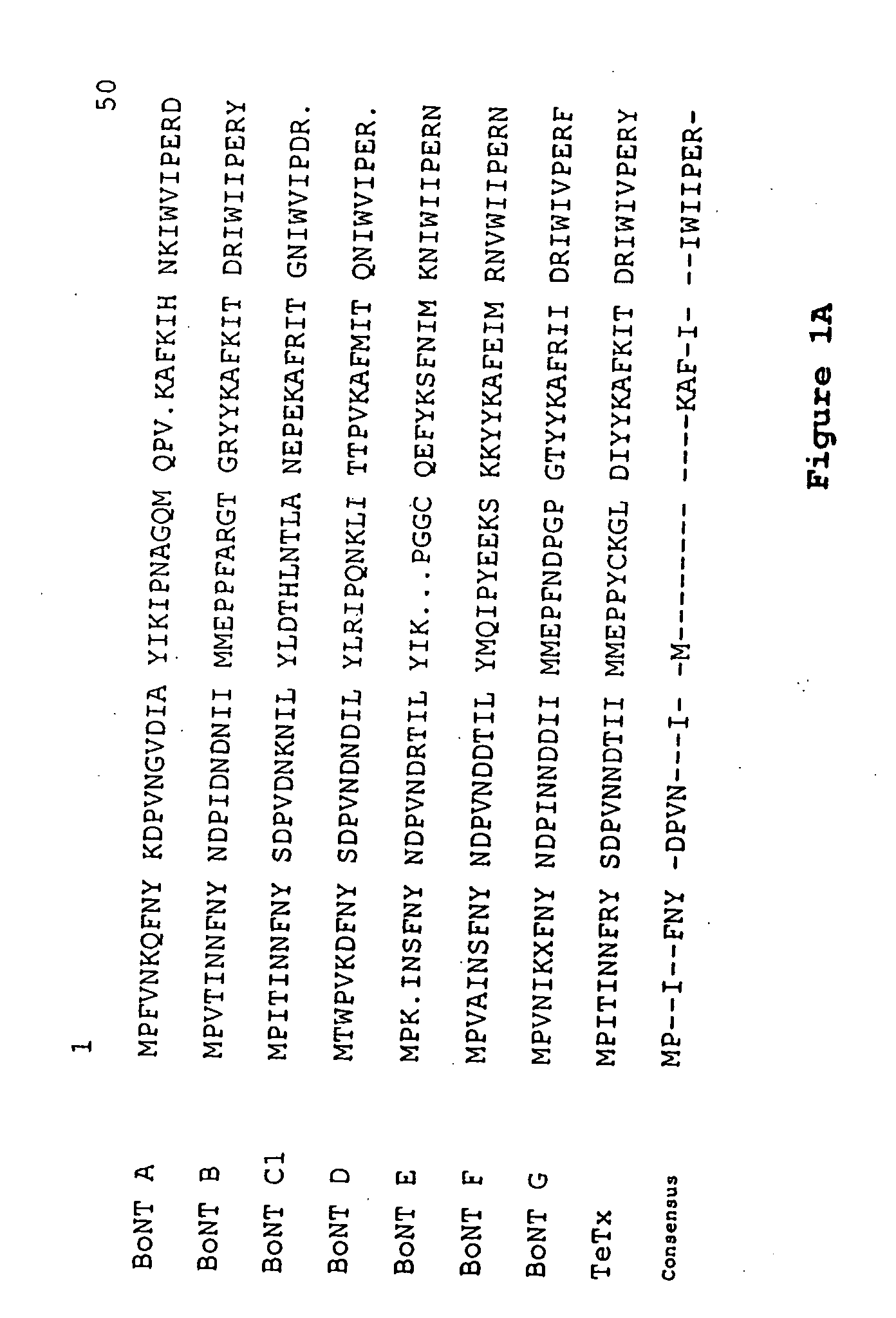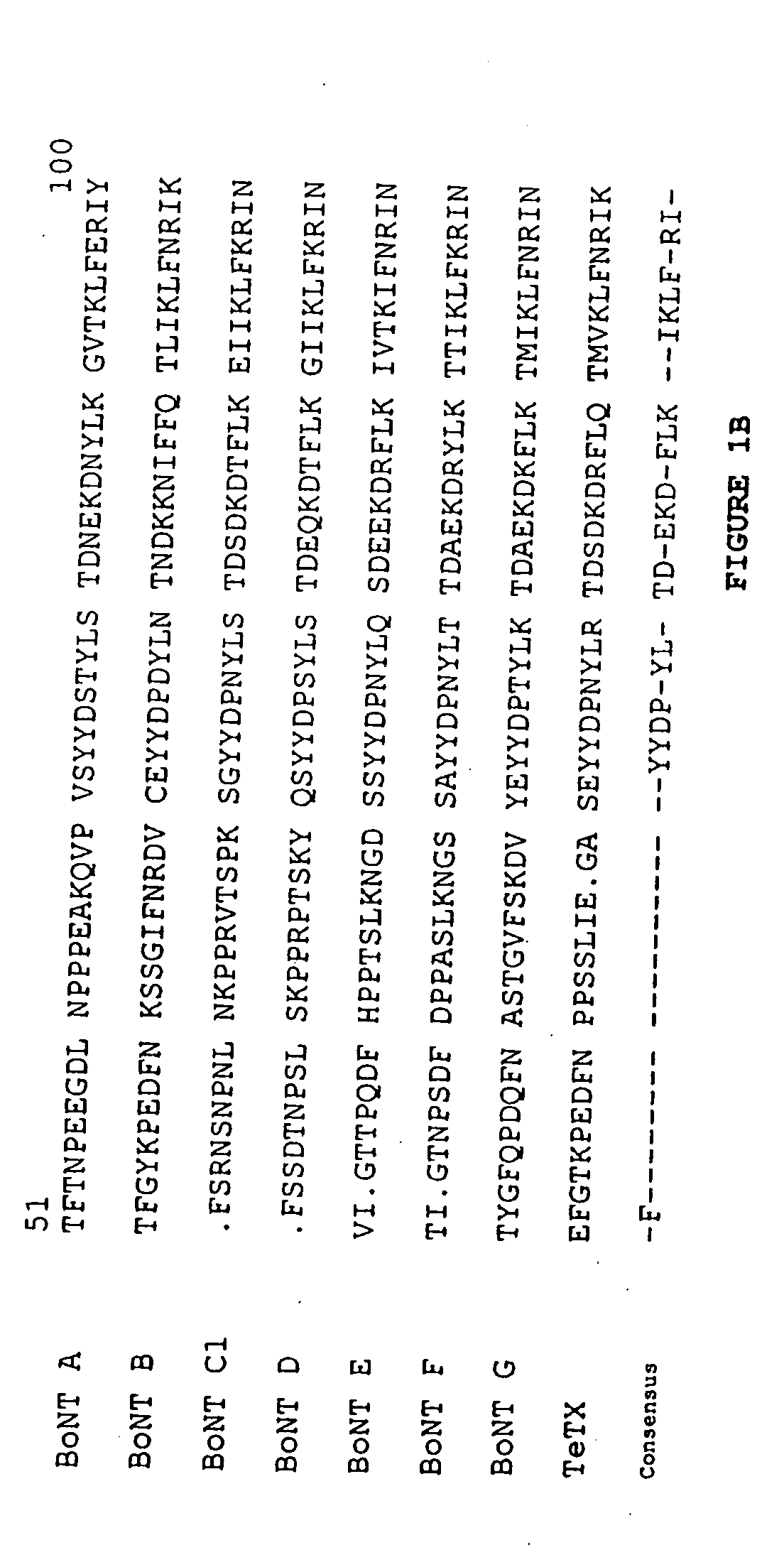Compositions and methods for transepithelial molecular transport
a technology of molecular transport and composition, applied in the direction of drug composition, immunological disorders, peptides, etc., can solve the problems of flaccid paralysis of the muscle, no vaccine that prevents botulism, and no research on botulism
- Summary
- Abstract
- Description
- Claims
- Application Information
AI Technical Summary
Problems solved by technology
Method used
Image
Examples
example 1
Detection of Transcytosis of BoNT A from the Apical Surface of T-84 Cells to the Basolateral Side of the Cells by Western Blotting
[0354]This experiment was carried out using native BoNT A and human gut epithelial cells (“T-84 cells”). Transcytosis was assayed in T-84 cell cultures using a TRANSWELL® apparatus assay system. Assay was initiated by addition of 1×10−8 molar native, purified, BoNT A to the upper chamber. Cultures were subsequently incubated for eighteen hours at 37° C. At the end of each experiment, contents of three basal chambers per condition were collected and concentrated in a CENTRICON™ micro-concentrator. The resulting solution was run on 7.5% (w / v) SDS-PAGE and subsequently transferred to nitrocellulose membranes. The identity and molecular weight of the transcytosed molecule was confirmed by Western blotting with anti-HC antibody.
[0355]A Western blot demonstrated that pre-transcytosis control (BoNT A) and BoNT A transcytosed through T-84 cells (i.e., collected f...
example 2
Western Blot of Apical to Basolateral Transcytosed BoNT A in MDCK Cells
[0356]This experiment was carried out using BoNT A and Madin-Darby Canine Kidney Cells (“MDCK cells”). Transcytosis was assayed in MDCK cell cultures using a TRANSWELL® apparatus assay system. Assay was initiated by addition of 1×10−8 molar native, purified, BoNT A to the upper chamber. Cultures were subsequently incubated for eighteen hours at 37° C. At the end of each experiment, contents of three basal chambers per condition were collected and concentrated in a CENTRICON™ micro-concentrator. The resulting solution was run on 7.5% (w / v) SDS-PAGE and subsequently transferred to nitrocellulose membranes. The identity and molecular weight of the transcytosed molecule was confirmed by Western blotting with anti-HC antibody.
[0357]The Western blot indicated that native BoNT A is poorly bound, internalized, transcytosed, and released by MDCK cells. BoNT A was not detected in medium collected from the basolateral side ...
example 3
Apical to Basolateral Transcytosis of BoNT A in T-84 Cells
[0358]Transcytosis of BoNT A linked to 125I at lysine residues was assayed in human gut epithelial cells (“T-84”) cell cultures using a TRANSWELL® apparatus assay system. Assay was initiated by addition of 1×10−8 molar (125I)-BoNT A to the upper chamber. Cultures were subsequently incubated for eighteen hours at 37° C. At the end of each experiment contents of the basal chamber were collected and gel filtered. Void volume fractions were assayed for radioactivity and the toxin peak was summed to determine total counts. The amount of transcytosis was calculated based on the specific activity of labeled BoNT A.
[0359]The results indicate that BoNT A linked to 125I was transported from the apical to the basolateral side of cells. It efficiently crossed T-84 cells at a transcytosis rate of 11.29±0.30 femtomoles per hour per square centimeter.
[0360]There are three major conclusions that stem from the experimental results. First, the...
PUM
| Property | Measurement | Unit |
|---|---|---|
| Mass | aaaaa | aaaaa |
| Mass | aaaaa | aaaaa |
| Mass | aaaaa | aaaaa |
Abstract
Description
Claims
Application Information
 Login to View More
Login to View More - R&D
- Intellectual Property
- Life Sciences
- Materials
- Tech Scout
- Unparalleled Data Quality
- Higher Quality Content
- 60% Fewer Hallucinations
Browse by: Latest US Patents, China's latest patents, Technical Efficacy Thesaurus, Application Domain, Technology Topic, Popular Technical Reports.
© 2025 PatSnap. All rights reserved.Legal|Privacy policy|Modern Slavery Act Transparency Statement|Sitemap|About US| Contact US: help@patsnap.com



